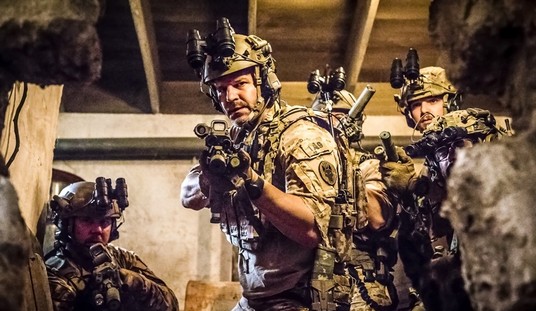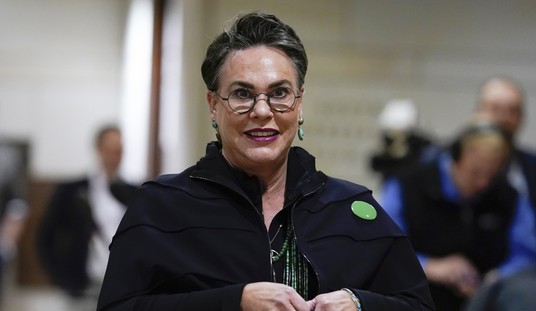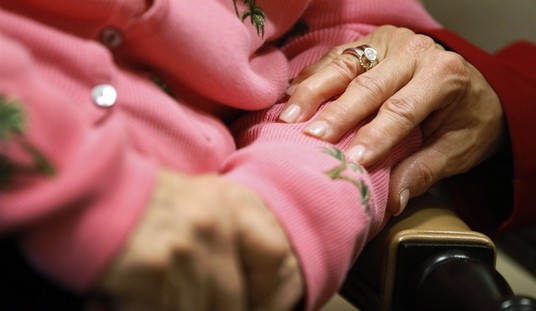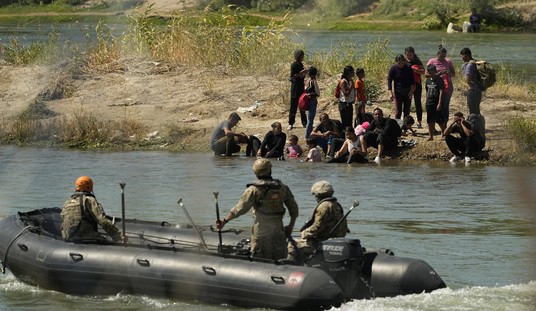The school shooting atrocity in Newtown, Connecticut has, predictably, touched off another round of the perennial gun-control debate. Especially for parents of young children (my youngest is the same age as most of the victims), the horror of the shootings is almost beyond description, and tends to make rational discussion impossible. And also unseemly, as Jonah Goldberg has explained. More to the point, this is one of those issues where the public demands foolproof solutions that remain elusive: we keep saying “never again” after mass shootings, terrorist attacks, and all sorts of other manmade and supposedly preventable disasters, but there’s never a perfect answer that guarantees that any such thing will never happen again (this is, for example, why anti-terrorism policies are best focused on terrorist organizations rather than lone nuts). We can only and always base public policy proposals on what will reasonably improve the situation without imposing costs we can’t live with.
The reality of no perfect or costless solutions lends both a hysterical quality to the gun debate as well as a one-sided burden of proof. Gun control advocates suggest a goal (the complete non-existence of firearms) that is not politically, legally or practically possible, and argue that opponents of any gun control measure show how their alternative would be 100% effective by comparison to a gun control utopia that doesn’t and never will exist. In a more rational, realistic debate, you would compare the actual proposed gun controls to a world without those proposals – and in that rational world, the first question for gun control advocates after Newtown is why gun control in Connecticut didn’t work after the Brady Campaign hailed the state’s tough gun laws as a model of public safety. Gun control – complete with an “assault weapons ban,” waiting periods, background checks, “gun free school zone” laws and the rest – was already tried in Connecticut, and it failed to make a difference. If Newtown means anything in the gun debate, it’s that gun control doesn’t work.
The trenches are long-since dug on both sides; if you can find clips of Archie Bunker discussing an issue on YouTube, chances are that we have already had a “national conversation” about that issue. Of course, changing the culture can be at least as important as changing the law, so it is certainly helpful to look again at how we handle things like responsible gun ownership and mental illness (besides the shooter himself, his mother bears responsibility for having firearms under the same roof with such a mentally unbalanced young man). If there’s one valuable service the NRA could provide in this debate – and Wayne LaPierre’s ham-handed press conference failed to provide – it is stepping up the cultural battle to engage responsible gun owners outside of government.
But both advocates and opponents of gun control tend to fall too easily into knee-jerk slogans that go too far. It is no less true for being a truism, for example, that guns don’t kill people, people kill people, and that we don’t get nearly as many calls for controlling, say, knives or baseball bats when they are misused. But it is also true that guns are the most efficient, portable, and cost-effective killing tools we have: that’s exactly why they remain the weapon of choice for soldiers, cops, criminals, and hunters all over the world (and why the right to own a gun matters). There’s a strong case that good people with guns can be a more effective answer to armed criminals than gun control; gun control advocates are almost invariably willfully blind to the value of this. But that doesn’t mean that proposals to arm everyone, everywhere are a good idea with no costs or a perfect, foolproof solution. It does no good for defenders of gun rights to overstate their arguments, any more than it helps proponents of gun control to ignore the costs and limitations of gun control or to react with incredulity to the idea that the Constitution means what it says. Frankly, if your approach to the Second Amendment is to laugh and ignore it, I’m not going to trust you to take the rest of the Bill of Rights seriously either.
I am probably a lot less pro-gun, and a lot less interested in guns, than most conservatives; I’ve never owned, fired or even held a gun, and personally I could be perfectly happy keeping it that way. I’d be personally content to live in a world with no guns at all. And I’m open to supporting reasonable gun regulations where there is reason to believe they will have more than just symbolic effects. But I also respect practical reality, the Constitution, and the rights of other people to freedoms that aren’t personally important to me. A few thoughts and observations on guns, Newtown and the way forward:
The NRA and the History of Gun Control
The NRA, as the nation’s most vocal guardian of the right to own a gun, naturally comes in for a lot of abuse after any major shooting, and its leadership sometimes doesn’t help the cause (there’s a reason why small-government conservatives have battled at times with the NRA, and why the Gun Owners of America exists). But much of the effort to paint the NRA as some sort of moneyed special interest that buys its influence ignores the group’s structure and history: it’s a consumer group of gun owners, not the trade association of gun manufacturers. As Frank Fleming noted on Twitter, “[p]eople don’t support gun rights because the NRA is so powerful; the NRA is so powerful because people support gun rights.” It would have faded years ago without that grassroots support. Brian Palmer at Slate explains where the NRA came from and how it got into politics in the first place:
For the most part, the NRA’s lobbying arm didn’t gin up the emotional fervor of firearms advocates – it resulted from it. The NRA was founded shortly after the Civil War by Union veterans who felt the Confederacy only lasted as long as it did because of the Southerners’ superior marksmanship. For nearly a century, the NRA catered to competitive shooters and merely dabbled in politics. As with so many other American cultural issues, things changed in the 1960s. Crime soared. Armed members of the Black Panthers began following police officers around American cities. Riots broke out in Newark and Detroit, and some government officials blamed easy access to guns. Assassins killed two Kennedy brothers and Martin Luther King Jr. In 1968, under pressure from terrified constituents, Congress passed the first major gun control legislation since the 1930s. A backlash ensued, as American firearms enthusiasts feared the government planned to take their guns. They pushed the relatively apolitical NRA to lobby on their behalf. When the leadership balked in 1977, a group of activists staged a coup. The new leaders commissioned a poll, which found that lobbying was the members’ biggest priority. They turned the group into a political force, with the Second Amendment as their bible.
This is much like the history of the abortion issue, in which heavy-handed liberals created an ideological opposition where none had existed before the 1960s. And as with abortion, the history of gun control in the U.S. begins with an explicitly racist agenda. UCLA law professor Adam Winkler observes:
America’s most horrific racist organization, the Ku Klux Klan, began with gun control at the very top of its agenda. Before the Civil War, blacks in the South had never been allowed to possess guns. During the war, however, blacks obtained guns for the first time. Some served as soldiers in black units in the Union Army, which allowed its men, black and white, to take their guns home with them as partial payment of past due wages. Other Southern blacks bought guns in the underground marketplace, which was flooded with firearms produced for the war.
After the war, Southern states adopted discriminatory laws like the Black Codes, which among other things barred the freedmen from having guns. Racist whites began to form posses that would go out at night to terrorize blacks – and take away those newly obtained firearms….Whites believed that they had to confiscate black people’s guns in order to reestablish white supremacy and prevent blacks from fighting back. Blacks who refused to turn over their only means of self-defense were lynched.
Overly aggressive gun control often sparks a backlash, and that’s exactly what happened after the Civil War. Determined to protect the freedmen’s rights, Congress passed legislation like the Freedmen’s Bureau Act [which] stated, blacks were entitled to “the full and equal benefit of all laws… concerning personal security… including the constitutional right to bear arms.”
Kentucky firebrand Ida B. Wells urged that “the Winchester rifle deserved a place of honor in every Negro home.” The first generation of legal battles by the NAACP were centered on defending Blacks who had used firearms in self-defense – e.g., hiring Clarence Darrow to defend Dr. Ossian Sweet who was mobbed for attempting move into a white neighborhood
….Frederick Douglass…recommended “a good revolver as the best response to the slave catcher.”
As Winkler notes, even the NRA itself turned away from its history to help devise the first gun-licensing laws in the 1920s, designed to keep immigrants from obtaining guns. And as he explained in a 2011 article for The Atlantic, the modern gun control movement was as much a response to the Black Panthers as anything.
The NRA’s position since the 1970s may seem unduly uncompromising – but it’s also more respectful of equal civil rights. And while we have thankfully moved on from the age of organized hate crimes, Jim Crow, and secession, they are not such distant memories to make us smug about the assurance that nobody in America need ever worry again about the need for protection against fellow Americans.
Guns are also the great equalizer, in a way that can be of importance to women and the elderly, particularly in high-crime areas or when traveling alone at night. Most crime is committed by men, disproportionately young men who are often physically stronger than their victims. Guns, far more than any other weapon, place women on an equal footing with their assailants. Just as today, the Founding Fathers’ generation understood this: I’ve recently been reading HW Brands’ sterling biography of Benjamin Franklin, and one of the anecdotes in the book recounts how Franklin’s wife prepared with the family gun to defend their home (while Ben was away in England) from a rampaging anti-Stamp Act mob.
Moreover, harken back to the original idea of the NRA: to teach marksmanship skills that could later be used in military service to the nation. In an age of all-volunteer militaries, this is a particularly important point: I don’t know whether anyone has formally studied the issue, but just from anecdotal experience I’d be willing to bet that young men and women who grow up with a gun in the household are much more likely to volunteer for military service, especially in the Army or Marine Corps. Which brings us to the Second Amendment – why we have one, what it means, and why it matters.
What Is The Second Amendment?
As you probably know, the Second Amendment to the US Constitution – adopted in 1791, and ceding pride of place in the Bill of Rights only to the freedoms of speech, religion and assembly – states that “[a] well regulated Militia, being necessary to the security of a free State, the right of the people to keep and bear Arms, shall not be infringed.”
A similar provision appears in the bills of rights of 43 states, including states that adopted them prior to 1791. Hunting – and in some parts of the country, protection from dangerous wildlife like wolves and bears – is a major reason why guns are popular, widespread and useful. But the Founding Fathers did not put the right to bear arms in the Bill of Rights because they were worried about restrictions on hunting. It is a political right: the right to bear arms in defense of one’s self, home, and state against intruders of all kinds, up to and including the national government, foreign invaders, secessionists or domestic hate groups like the Klan. I can’t really explain why better than this spellbinding Newt Gingrich address to the NRA in 2011, especially the ten minutes starting around 4:50:
The men who wrote the Bill of Rights did not include the Second Amendment as an oversight or a rhetorical flourish; as Newt explains, the history of the right to bear arms was real, vivid and a life-or-death matter to them and one they saw as “necessary to the security of a free State.” Madison in Federalist No. 46 explicitly argued at length that an armed citizenry would protect even against our own federal government:
[Compared to the small federal military Madison envisioned] would be opposed a militia amounting to near half a million of citizens with arms in their hands, officered by men chosen from among themselves, fighting for their common liberties, and united and conducted by governments possessing their affections and confidence. It may well be doubted, whether a militia thus circumstanced could ever be conquered by such a proportion of regular troops. Those who are best acquainted with the last successful resistance of this country against the British arms, will be most inclined to deny the possibility of it. Besides the advantage of being armed, which the Americans possess over the people of almost every other nation, the existence of subordinate governments, to which the people are attached, and by which the militia officers are appointed, forms a barrier against the enterprises of ambition, more insurmountable than any which a simple government of any form can admit of. Notwithstanding the military establishments in the several kingdoms of Europe, which are carried as far as the public resources will bear, the governments are afraid to trust the people with arms. And it is not certain, that with this aid alone they would not be able to shake off their yokes. But were the people to possess the additional advantages of local governments chosen by themselves, who could collect the national will and direct the national force, and of officers appointed out of the militia, by these governments, and attached both to them and to the militia, it may be affirmed with the greatest assurance, that the throne of every tyranny in Europe would be speedily overturned in spite of the legions which surround it. Let us not insult the free and gallant citizens of America with the suspicion, that they would be less able to defend the rights of which they would be in actual possession, than the debased subjects of arbitrary power would be to rescue theirs from the hands of their oppressors.
Madison would, it turns out, underestimate the federal government, which would go on over the next 80 years or so to impose its will on all manner of armed citizens – the Whiskey Rebellion, John Brown’s abolitionists, the Confederate Army, the Mormons. (Nat Turner’s slave rebellion was conducted without firearms, with predictable lack of success).
Madison’s Constitution – even before its inclusion of an express right to bear arms – already contained other provisions relating to the citizen Militia, over which Congress was given specific but not plenary powers:
To provide for calling forth the Militia to execute the Laws of the Union, suppress Insurrections and repel Invasions;
To provide for organizing, arming, and disciplining, the Militia, and for governing such Part of them as may be employed in the Service of the United States, reserving to the States respectively, the Appointment of the Officers, and the Authority of training the Militia according to the discipline prescribed by Congress
The President’s Commander-in-Chief power is likewise explicitly extended to “Commander in Chief of the Army and Navy of the United States, and of the Militia of the several States, when called into the actual Service of the United States.” And immediately following the adoption of the Second Amendment, the Congress of the Founding generation used the authority granted in the Militia clause:
A 1792 federal law mandated every eligible man to purchase a military-style gun and ammunition for his service in the citizen militia. Such men had to report for frequent musters – where their guns would be inspected and, yes, registered on public rolls.
The Supreme Court has recently affirmed, in two landmark cases (DC v. Heller and McDonald v Chicago), a conclusion supported by extensive scholarship: that the Second Amendment protects an individual right, one that exists regardless of whether an individual has been called into militia service. (I have argued before that it may also protect a state’s right to permit or promote gun ownership within its own borders). I won’t rehash the ins and outs of the argument here except to note that a huge majority of the liberal commentary on the issue basically amounts to laughing and saying “that can’t be true!” rather than actually investigating the facts and the history of the right (not for nothing has Second Amendment scholarship been dominated in recent decades by the pro-gun-rights scholars). The failure to take the Constitution seriously is one that continues to plague the gun control movement.
But what “Arms” are protected? Given the political purpose of the right and its intimate connection to national defense – and how Congress read the Militia clause in 1792 – it is illogical in the extreme to argue that “assault weapons” or “military-style weapons” or some such are not covered. The entire point of the Second Amendment is to ensure that citizens could be armed and ready to be converted, on short notice (think: “minutemen”) into a military force. In 1791, that meant the standard equipment of an infantryman of the day, a musket or rifle and likely a bayonet. (Veterans of the savage fighting at Bunker Hill would scoff ruefully at the notion that muskets were not “assault weapons”). Of course, even the colonial militia only had a right to possess infantry weapons; even in the 18th century, the militiamen owned muskets and rifles individually, but the town or state collectively owned the cannons. No serious reading of the Second Amendment would protect your right to own artillery, tanks or fighter jets. It is a fair question where or whether there is any limit to what kind of infantry-style weapons (rifle, sidearm, etc.) would count as “Arms” under the Second Amendment, but the mere description of a weapon as a military-style rifle makes it more rather than less likely that it would be the sort of thing the right was written to protect (indeed, the gun control side argued – unsuccessfully – in Heller that handguns were not protected because they were not of sufficient military use).
By contrast, the Second Amendment specifically speaks of the militia being “well-regulated” and gives to Congress explicit powers relating to that regulation. That makes the right to bear arms less like the more absolute rights to free speech and free exercise of religion (about which “Congress shall make no law”) and more like the right against searches and seizures, which the Fourth Amendment bans only when “unreasonable.” Indeed, Congress used that authority in 1792 to require gun registration and ownership. The obvious conclusion is that, while neither Congress nor the states can properly bar the ownership or possession of any class of guns, one or both may impose reasonable regulations. Again, we can argue about the limits of what kind of regulation is wise or permitted – I personally tend to support background checks, limited waiting periods and even a gun registry – but there’s no particular reason to believe that the Second Amendment is intended to present a meaningful obstacle to such regulations of the right.
(Gun owners often argue that a state or national gun registry would make confiscating guns easier. That’s true, but we don’t prevent the government from licensing the broadcasting spectrum or knowing where newspapers are published, because we have a tradition of respecting freedom of speech. If we took the Second Amendment more seriously, we might have less paranoia around regulating gun ownership).
Ban…What?
Even aside from the Constitution, in considering how changes in the law would play out, a little perspective should be in order from all sides. First of all, it is simply not the case that a ban on all guns is politically possible in the United States; even a Washington Post snap poll after the shootings found 71% of Americans opposed, and 56% strongly opposed, to a total gun ban.
Moreover, we know from long experience that when you ban something there’s a public demand for, it gets less common, more expensive and more under the control of the criminal class – but it doesn’t go away entirely. That’s true whether you are talking about guns, alcohol, drugs, cigarettes, gambling, abortion, prostitution, pornography, or illegal immigration. That’s not a reason to give up on banning any bad things, but it means that you have to look down the road at what you do next, and in this case that’s a world where the illegal gun population would not decline nearly as much as the legal gun population. There may be something like 300 million guns already out there in the U.S., which can not feasibly be confiscated. If you like the War on Drugs, you’d love a War on Guns. Moreover, long experience with restrictive gun control, as in Chicago, suggests that criminals are much more likely to endure the risks and expenses of buying illegal guns, tilting the playing field further against law-abiding citizens.
This is why a mass shooting is the perfect storm for gun control advocates: the debate on guns and crime or even guns and terrorism is a losing one for them, because people easily grasp that gun bans don’t make a dent in guns owned by the bad guys and that the better path is to crack down on the criminals, not the guns. Criminals will always make the extra effort to get illegal guns; terrorists are just as happy to use bombs; suicides and crimes of passion will just as easily reach for whatever stands at hand. Ben Domenech has a must-read roundup of what we know and have learned about both gun control and mass shootings, and it’s not a record that inspires confidence in the superiority of the gun control approach.
What is more likely to be proposed is some form of “assault weapons ban.” But we know from experience of the Clinton-era ban that the final legislation is likely to be shot through with nonsensical distinctions drawn from the difficulties of defining what it is that the statute aims to ban. It is sadly the case that a huge amount of the gun control debate is driven by liberals and journalists with little or no personal experience with guns, and therefore no concept of how to draw the distinctions at issue. Tim Carney, as part of a larger explainer on the various distinctions (“use of the phrase semi-automatic when talking about guns is like using the phrase ‘gasoline cars.'”) recalls the 1994 bill:
First, all guns can be used to assault someone – even a muzzle-loading black-powder rifle.
Second, Congressional attempts to define this term were laughably ad hoc.
A rifle could cease being an assault weapon if you sawed off the flash suppressor. It could become an assault weapon if you added a bayonet.
A 49-ounce handgun could be legal under this law while an identical version that was one ounce heavier could be outlawed.
Efforts to block the access of a very small subset of people – mass shooters – from to a narrow band of originally-legally-purchased firearms (the Newtown shooter was blocked by Connecticut’s tough gun laws from buying a rifle just days before the attack, so he stole one instead) is a worthy goal, to be sure; some of the proposals under discussion might reduce the number of victims in some future incident. But in practical terms, the odds are much greater that in our effort to lock this particular barn door, we are talking about a large national political debate, the restriction of freedom on a large number of people, and the additional burden on law enforcement nationwide for a slight reduction in firepower that could potentially save maybe a handful of lives per decade.
It’s hard to keep perspective after an event like Newtown – it’s almost impossible, in fact, for parents to regard such an atrocity with any perspective at all – but the likely result of all this debate is a whole lot of political posturing for not very much result. In some ways this recalls the Terri Schiavo debate in 2005, when national politics ground to a halt over the life of one woman – a noble goal, perhaps the noblest of goals – but one that squandered the opportunity for a newly re-elected president to do bigger things affecting a much larger swath of the country’s future, but which our political system was unable to resist because of the moral certainty of those who fought for Schiavo. (Our priorities can seem quite strange in this way: Planned Parenthood kills twenty children every half hour, day after day, week after week, month after month, year after year, and we do nothing about that.)
The next round of gun control debates is likely to be long on symbolism and short on practical solutions. Congress should not pass any laws – in this or other contexts – without some good reason to believe they will actually accomplish something. The burden remains on the advocates of new gun laws to show not only that their proposals are constitutional and not undue burdens on the rights and freedoms of law-abiding citizens, but that they actually have some practical chance of working.
(In Part II, I will look at the different ways – prevention, preemption, deterrence, disarmament, self-defense – that we look at violence)














Join the conversation as a VIP Member